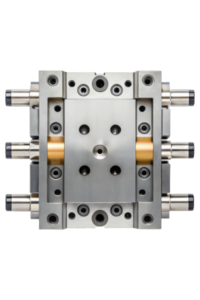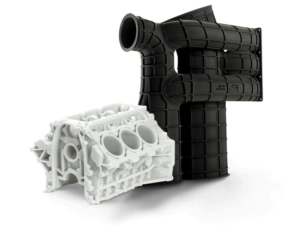When it comes to materials used in the medical and healthcare industries, there are stricter criteria compared to other sectors. These industries are subject to specific regulations that align with required performance standards for various healthcare applications. This informative document aims to shed light on these regulations, material performance criteria, and important considerations for using materials in the injection molding process for part production.
When dealing with healthcare or medical regulations, certain standards come to mind, such as ISO 10993, USP Class VI, and FDA regulations. Among these, medical products are required to comply with ISO 10993 and are also supported by USP Class VI and FDA regulations. The performance criteria for healthcare products are key factors that drive regulatory compliance. Let’s explore some of these criteria:
- Biocompatibility: Testing standards for biocompatibility are defined by ISO 10993:1 and USP Class VI for plastics.
- Product life cycle: The long-term properties of materials, whether they are meant for reusable products lasting several years or single-use applications.
- Sterilization methods: Different sterilization techniques, such as steam autoclave, high-energy gamma radiation, or ethylene oxide gas, have varying impacts on materials.
- Cleaning/Disinfecting: The chemical resistance of plastics varies based on their molecular structure, which is a crucial consideration for effective cleaning and disinfection.
- Retention of properties: Ensuring the strength and toughness of materials throughout the product’s lifespan.
The biological evaluation and biocompatibility testing of medical devices and materials are influenced not only by the type of medical product but also by the intended use (e.g., contact with skin, mucous membrane, blood, tissue) and the duration of use (less than 24 hours, less than 30 days, unlimited).
The United States Pharmacopeia Convention (USP) is an organization that evaluates packaging used for pharmaceutical products. It sets standards related to quality, purity, and identity, and examines products manufactured worldwide, primarily those sold, consumed, or used in the USA. While the USP is crucial for pharmaceutical products and their manufacturing technologies, its role is merely supportive for medical products.
In the field of medical technology, FDA compliance, which assesses material suitability for direct and indirect contact with food, is often utilized to provide users with essential information for risk assessment. However, FDA compliance is not a mandatory requirement for materials used in the medical or pharmaceutical fields. The American Food and Drug Administration (FDA) specifies the raw materials, additives, and properties of plastics in the “Code of Federal Regulations” CFR 21. Materials that meet the relevant requirements are considered FDA compliant.
Sterilization methods can be categorized into three groups: gamma, steam, and ethylene oxide gas.
- Gamma irradiation: This ionizing radiation sterilization technique involves exposing materials to gamma rays for sterilization. Cobalt-60 is commonly used as the radiation source. Sterilizing radiation dosage is measured in Grays (Gy) or rads.
- Steam sterilization: Also known as autoclaving, this method uses saturated steam injected into a pressure chamber at temperatures ranging from 121-148 °C (250-300 °F) and a pressure of 15 PSI for a sufficient duration to achieve sterilization. However, some plastics may degrade when subjected to autoclaving.
- Ethylene oxide gas (EtO): This method is often employed to sterilize materials that are sensitive to heat or radiation. Many plastics fall into this category, and EtO sterilization is commonly used for single-use medical devices made of plastic. EtO gas requires careful handling due to its flammability and toxicity. The sterilization process is technically complex and primarily suitable for large-volume sterilizations.
Chemical resistance is an important consideration, and in general, semi-crystalline polymers exhibit better chemical resistance compared to amorphous polymers. The resistance of materials is affected by factors such as concentration, temperature, exposure time, exposure type (e.g., single-sided, immersion), and stress levels in the part. Cost considerations may also influence the material selection for medical projects. The pyramid below can help identify suitable material candidates.
Now let’s delve into the specifics of various materials applicable to medical products and the injection molding process. Each material has its pros and cons, complies with or faces challenges regarding regulations, and may or may not be suitable for different sterilization methods.
Lastly, consider the need for antimicrobial properties in your products. SANAFOR is an antimicrobial solution that offers a safe and affordable way to effectively control the growth of microorganisms, adding value to your end products. The benefits of applying antimicrobials include broad-spectrum antimicrobial technology, cost-effectiveness, durable protection, ease of use during polymer processing, compatibility with various polyolefin polymers, good thermostability, and regulatory approvals.


